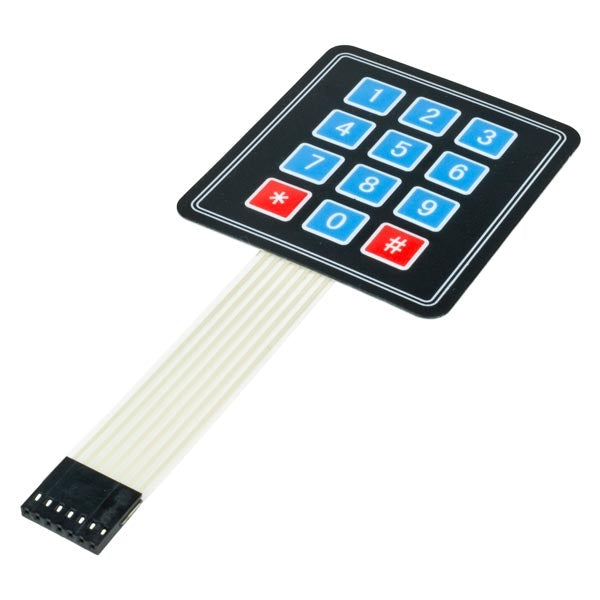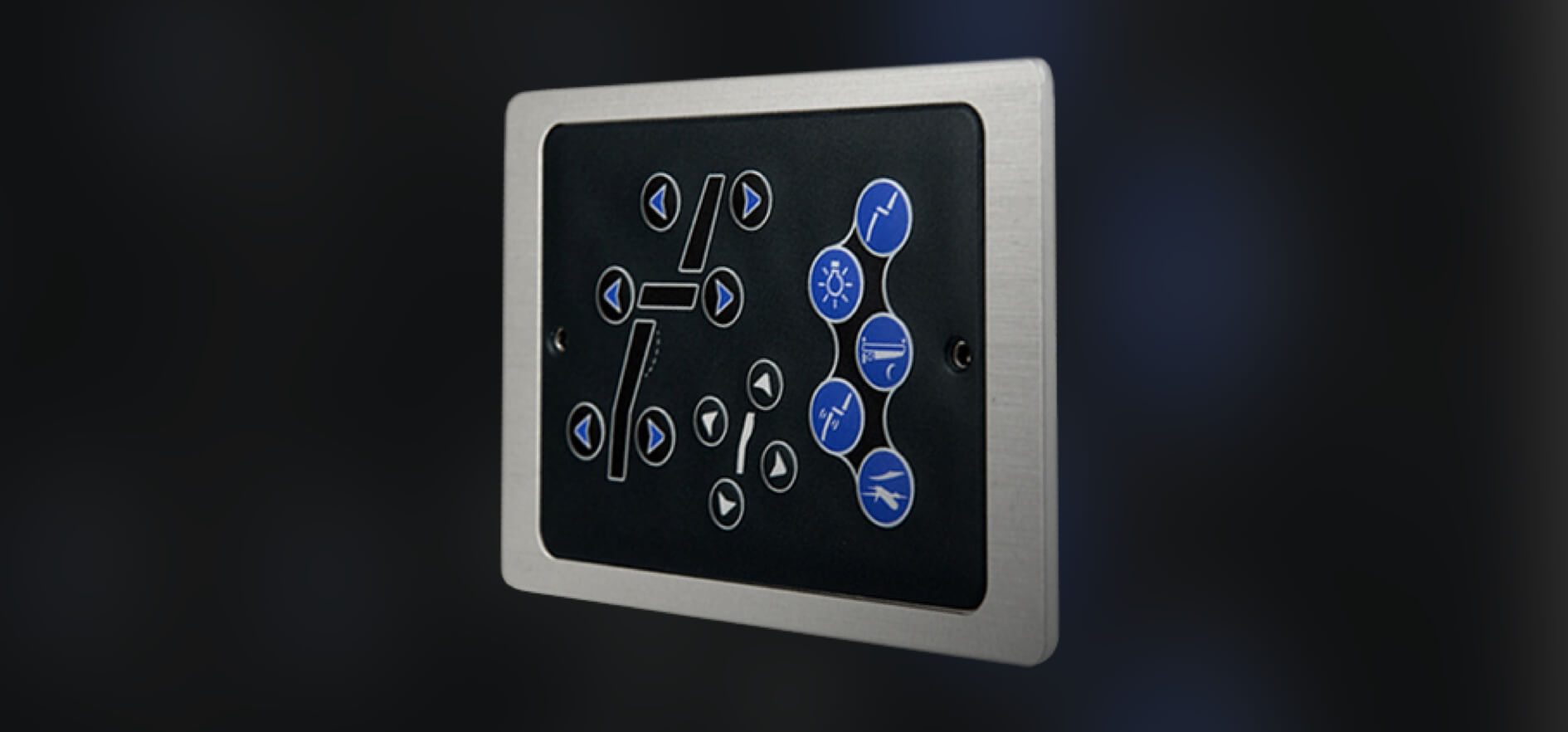Why Membrane Switches Are Preferred for Their Thin and Compact Styles
Why Membrane Switches Are Preferred for Their Thin and Compact Styles
Blog Article
The Ultimate Resource on Membrane Switches Over: Layout, Functionality, and Applications
Membrane changes offer as an intriguing junction of style and capability, playing a crucial function in modern user interfaces across various sectors. As we discover the diverse applications of membrane buttons, it ends up being apparent that their flexibility and resilience are crucial in atmospheres ranging from health care to consumer electronics.

Recognizing Membrane Layer Buttons
Membrane buttons are a sort of interface modern technology commonly used in different electronic tools, identified by their thin, adaptable design and functionality. These buttons include numerous layers that include visuals overlays, glue layers, and circuitry, allowing a portable and efficient interface for customers. They can be found in appliances, clinical devices, and industrial control board, offering a reliable technique for user interaction.
Among the key advantages of membrane layer buttons is their ability to withstand pollutants such as dirt and wetness, making them suitable for environments where sturdiness is crucial. Their low-profile style permits smooth integration into different applications, while the adjustable visuals overlays enhance individual experience by supplying clear visual responses. Additionally, membrane switches can accommodate a variety of modern technologies, such as tactile feedback and backlighting, further boosting their usability.
The production procedure for membrane switches over commonly entails display printing, die-cutting, and lamination methods, making sure accuracy and consistency in manufacturing. Overall, membrane layer changes represent a reliable and flexible service for modern electronic gadgets, integrating functionality with visual charm in customer interface style.
Key Elements and Design Aspects
A variety of vital elements and design elements integrated to produce an effective membrane layer button. At the core, the visuals overlay serves both visual and practical purposes, using an easy to use user interface while shielding interior parts from environmental variables. The selection of products, usually polyester or polycarbonate, influences longevity and responsive responses.
Beneath the overlay, the glue layer ensures the button sticks securely to the substratum, which can be glass, steel, or plastic. The spacer layer is vital, as it preserves the needed void between the overlay and the circuit layers, enabling for efficient actuation. Membrane Switches. Circuit traces, typically made from conductive ink or adhesive, are published on a versatile substratum, allowing electric signals to be sent when pressure is applied
Style factors to consider additionally include the setup of tactile domes or embossing that supply physical feedback to the user, improving the total experience. Furthermore, the format and spacing of the buttons must be enhanced for convenience of use, guaranteeing that customers can browse the interface without effort. In general, these parts and layout elements work synergistically to produce a trustworthy, practical membrane layer switch customized to specific applications.
Capability and Operation Device
At the heart of efficient functionality for membrane layer changes lies their functional mechanism, which promotes customer interaction with an easy yet efficient style. These switches operate the concept of pressure activation, where a customer applies pressure to a designated location of the switch (Membrane Switches). This action compresses the layers of the button, finishing an electrical circuit that sends a signal to the linked gadget
The building and construction typically consists of a top visuals layer, a glue spacer layer, and a lower circuit layer, which jointly create a durable interface. When pressure is applied, the leading layer falls down versus the bottom circuit layer, enabling conductive traces to attach. This style not just enables clear responsive responses however likewise makes certain sturdiness and dependability, as the switches are usually immune to dirt and wetness.
Moreover, the versatility of membrane layer switches enables integration with different modern technologies, including LED signs and microcontrollers, improving their capability. By supplying a streamlined user interface that minimizes mechanical wear, membrane layer switches over remain a preferred right here choice in applications ranging from consumer electronics to commercial equipment, making certain ideal performance and customer fulfillment across varied atmospheres.
Sorts Of Membrane Layer Switches

An additional considerable classification is brightened membrane layer switches, which incorporate backlighting to enhance presence in low-light problems. These switches are often utilized in control panels and control panels where clear presence is important.
Additionally, there are custom-made membrane layer switches designed to meet particular dimensional, graphical, and practical needs. These modifications can consist of one-of-a-kind forms, colors, and layouts, permitting seamless integration right into various devices.

Applications Throughout Numerous Industries
Exactly how do membrane layer buttons improve performance across varied industries? In the clinical sector, membrane layer switches play a crucial function in devices such as diagnostic tools and individual monitoring systems, where dependability and ease of cleansing are vital.
In the automotive sector, membrane layer buttons are typically used in control panels and control board, offering user-friendly controls that enhance driver safety and security and convenience. The customer electronics sector likewise takes advantage of their adjustable and light-weight features, making it possible for sleek styles for smart devices and home appliances.
Additionally, membrane layer switches discover applications in commercial automation, where they add to efficient equipment procedure and monitoring systems. Their resistance to dirt and dampness ensures performance popular conditions (Membrane Switches). Additionally, the food and beverage market uses membrane layer switches for equipment control, where hygiene and sturdiness are critical
Conclusion
In conclusion, membrane switches over stand for an important development in individual interface technology, characterized by their unique style and functionality. The flexibility of membrane switches facilitates their application throughout diverse industries, from clinical gadgets to consumer electronics.
Membrane layer changes offer as a fascinating junction of style and functionality, playing a click this link crucial function in modern user interfaces throughout various fields.Membrane buttons are a kind of user interface modern technology commonly used in different electronic tools, defined by their slim, versatile design and capability.At the heart of efficient functionality for membrane layer changes exists their operational device, which helps with customer interaction with a straightforward yet effective design. These switches run on the principle of stress activation, where a user uses pressure to a designated area of the button.In conclusion, membrane layer switches over represent a crucial technology in user interface modern technology, characterized by their distinct layout and performance.
Report this page